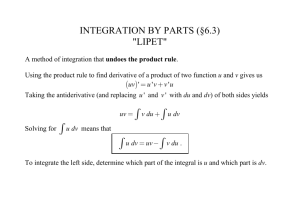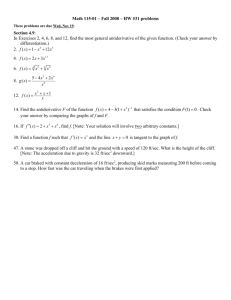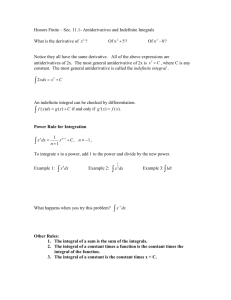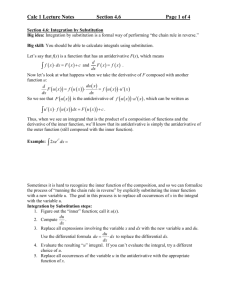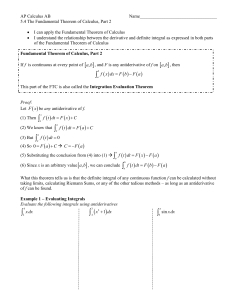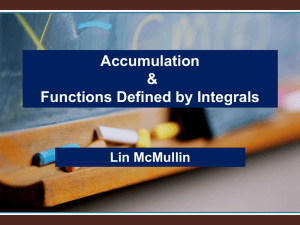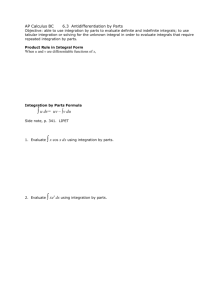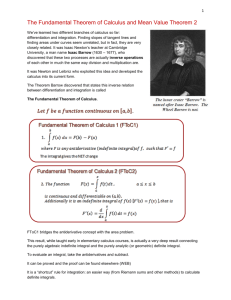Computing Indefinite Integrals
advertisement
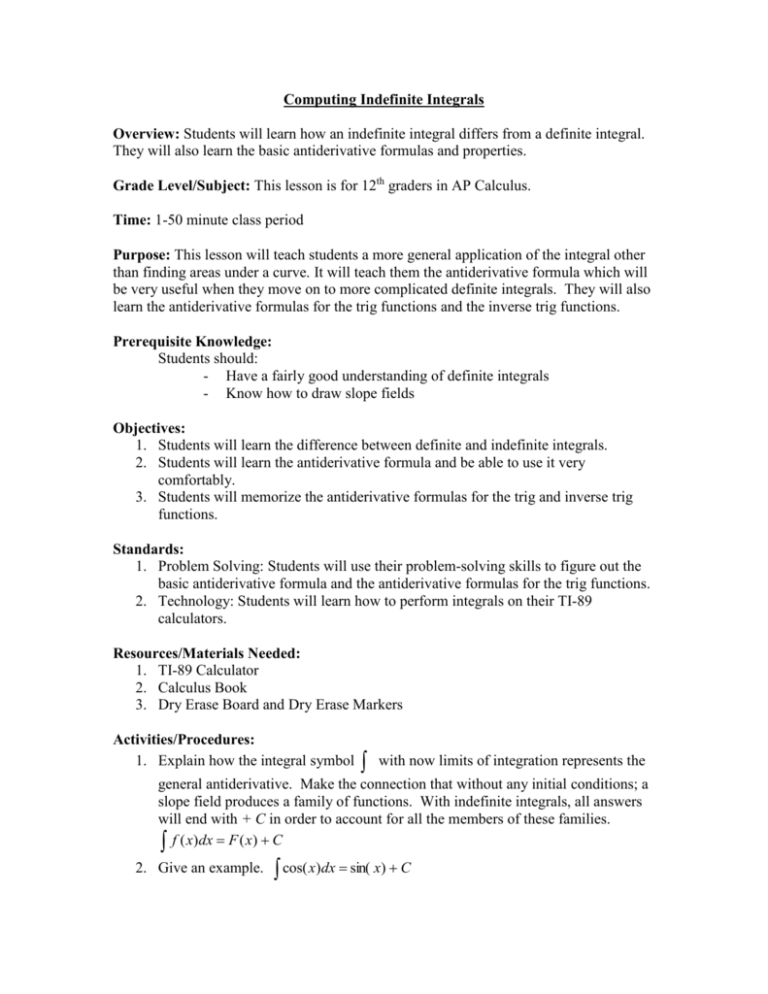
Computing Indefinite Integrals Overview: Students will learn how an indefinite integral differs from a definite integral. They will also learn the basic antiderivative formulas and properties. Grade Level/Subject: This lesson is for 12th graders in AP Calculus. Time: 1-50 minute class period Purpose: This lesson will teach students a more general application of the integral other than finding areas under a curve. It will teach them the antiderivative formula which will be very useful when they move on to more complicated definite integrals. They will also learn the antiderivative formulas for the trig functions and the inverse trig functions. Prerequisite Knowledge: Students should: - Have a fairly good understanding of definite integrals - Know how to draw slope fields Objectives: 1. Students will learn the difference between definite and indefinite integrals. 2. Students will learn the antiderivative formula and be able to use it very comfortably. 3. Students will memorize the antiderivative formulas for the trig and inverse trig functions. Standards: 1. Problem Solving: Students will use their problem-solving skills to figure out the basic antiderivative formula and the antiderivative formulas for the trig functions. 2. Technology: Students will learn how to perform integrals on their TI-89 calculators. Resources/Materials Needed: 1. TI-89 Calculator 2. Calculus Book 3. Dry Erase Board and Dry Erase Markers Activities/Procedures: 1. Explain how the integral symbol with now limits of integration represents the general antiderivative. Make the connection that without any initial conditions; a slope field produces a family of functions. With indefinite integrals, all answers will end with + C in order to account for all the members of these families. f ( x)dx F ( x) C 2. Give an example. cos( x)dx sin( x) C 3. Now give an example using initial conditions. Explain how to use the initial conditions to solve for C. 4. Introduce the antiderivative formula by having the students find a pattern through d r 1 ( x ) (r 1) x r . We also can see that for r not equal the use of derivatives. dx r 1 d x to -1, ( ) x r . So, since integrals reverse derivatives, we have dx r 1 x r 1 r x r 1 C . 5. Give an example. 5 x 4 3 x 2 7 x 2 x 8)dx 6. Explain how to check your answers: Differentiate the answer and make sure it is the original function. 7. Have each table come up with the antiderivative formulas for all the trig functions by reversing the derivative formulas. 8. Have them work on figuring out the antiderivative formulas for ex, ax, and ln(x). Explain how the ln(x) fills in the hole from before where x = -1. 9. Teach the students how to do integrals on their TI-89 calculator. Homework: Come up with the antiderivative formulas for the inverse trig functions by reversing the differentiation forumulas. Read Section 6.5 and take notes. Complete attached worksheet. Find a formula of the form F(x)+C for each of the indefinite integrals indicated. 1) ( x 2 x 1)dx 2) x4 dx 2 3) x dx 4) 5) 3 x dx x 3 x 3 3 dx 6) x 7 / 3 7) (sin 2 ( x) cos 2 ( x)) dx 8) 1 dx 4 4x 2 9) (e x 5 x 2 )dx 10) ( x sec x tan x)dx
